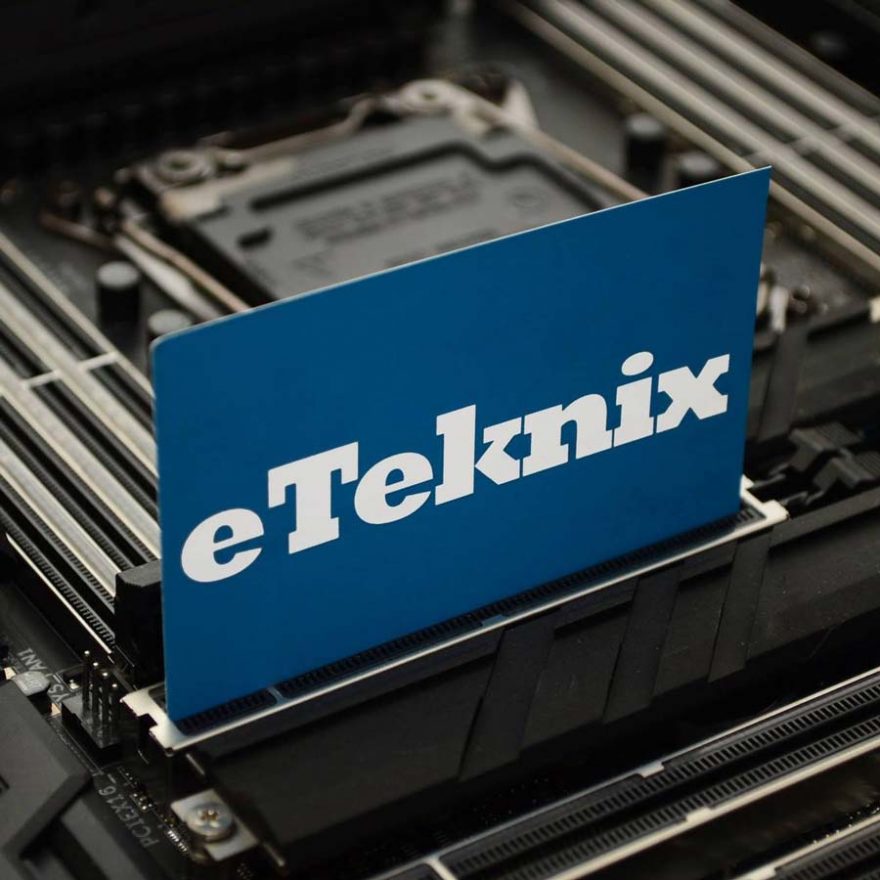NZXT Manta Mini-ITX Chassis Review
Peter Donnell / 9 years ago
Introduction
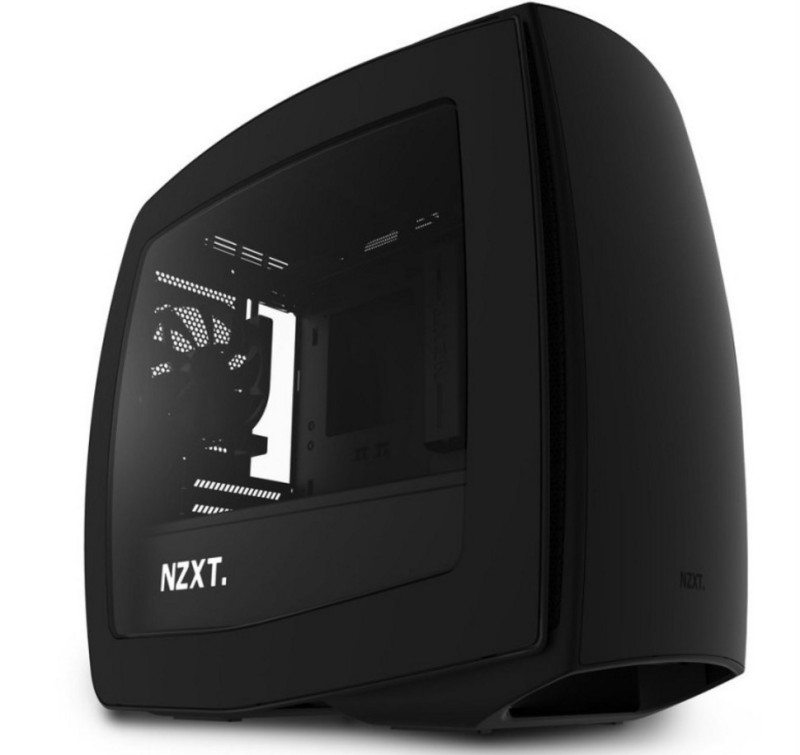
The NZXT Manta is here at last! Just a few weeks ago we were lucky enough to meet NZXT at CES 2016 in Las Vegas, where the company unveiled their latest mini-ITX chassis to the world. The Manta is unlike anything else NZXT has done before, taking inspiration from the world of supercars and bringing sweeping aerodynamic curves and creating a chassis that looks unlike anything that has gone before it; but is it any good? That’s what we hope to find out.
- New manufacturing technology offers unparalleled build quality
- Elegant, curved steel paneling and window
- Double the cable management space
- Dual 280mm liquid cooling support
- Kraken X61-ready with push/pull capabilities
- Integrated PSU shroud for a beautifully clean build
- Fully filtered, easy-to-remove intake
The Mini-ITX chassis market is big business these days, with many users wanting stylish and compact gaming systems for their bedrooms, home office, HTPC, LAN events and so much more. With single GPU gaming systems being more popular, partly due to lackluster dual-GPU support by many modern games, mini-ITX motherboards are becoming increasingly popular. With the Manta having room for a large GPU of up to 363mm, plenty of storage bays, and a full ATX PSU, it’s certainly ticking all the right boxes.
It may be suited for a smaller motherboard, but the Manta is a little bigger than most, giving it exceptional cable routing space, room for a 280mm water cooler in the front and top, and room for a PSU shroud for a clean interior design.
As you can see, the chassis doesn’t look anything like what we’re used to seeing in terms of design. The left side panel curves up at the bottom front edge, and bulges out slightly giving it a fantastic curved look. I know it’s not going to be to everyone’s taste, but I think it’s great to see something a little different. I could joke that it looks like an H440 that’s put on weight, but it’s also considerably shrunk down in overall size compared to the H440; it looks seriously cool! Thought the side panel, you can see the PSU shroud, which comes with an LED backlit NZXT logo, as well as getting a great interior view of the rest of the chassis.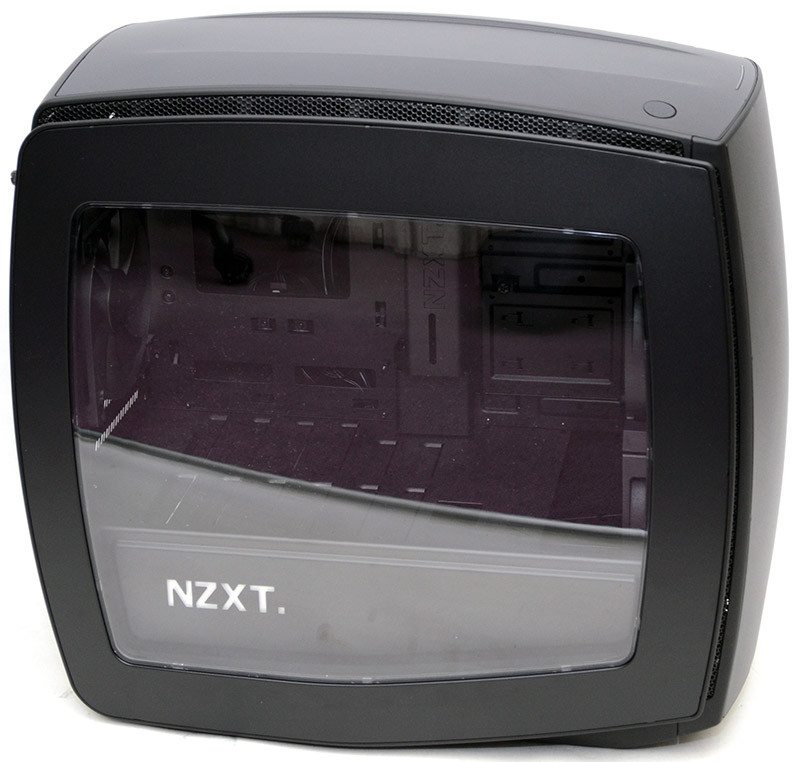
The right side panel isn’t exactly standard either, following the same sweeping curves of the left panel, but with one added benefit, it’s size and shape provide double the cable management of most chassis and that’s certainly no bad thing!
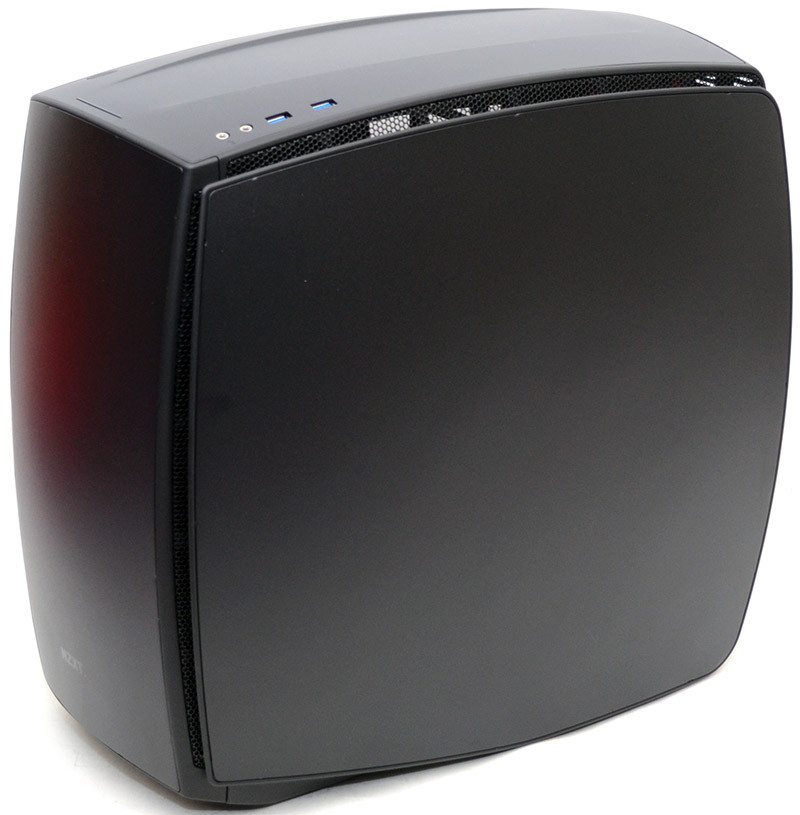
The front panel is just as curvy as the rest, but you’ll also notice how the side panels, top panel, and the front panel don’t quite join up. This is to provide a lot of filtered ventilation, as smaller chassis can often run a little hotter, but that’s not going to be an issue here, as cooling is one of the strongest features on the Manta. Plus, the floating side panel effect just adds to the overall uniqueness of the chassis.
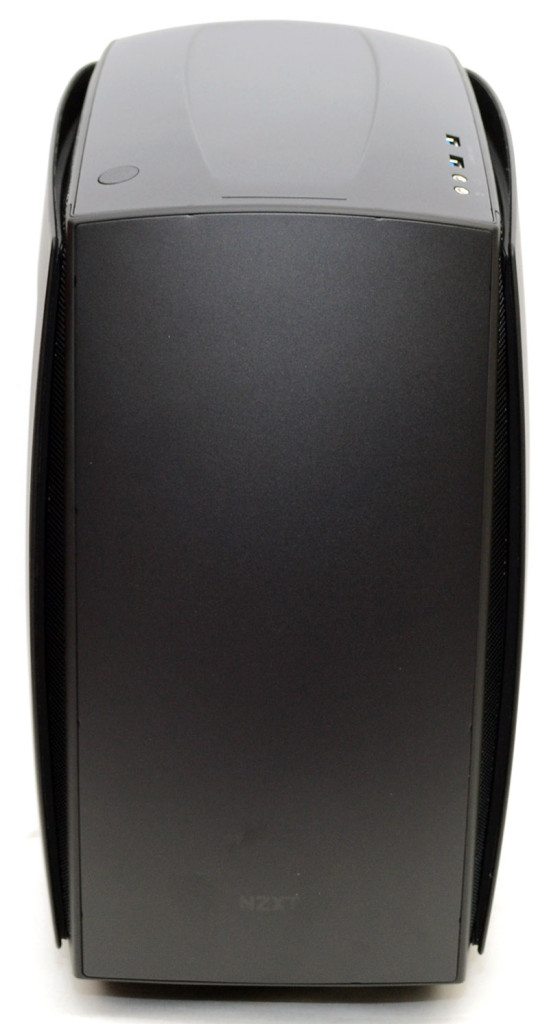
The side panel sweeping upwards at the front leaves it with a large opening at the base of the front panel, albeit one that’s slightly out of sight. This provides even further airflow to the front panel cooling.
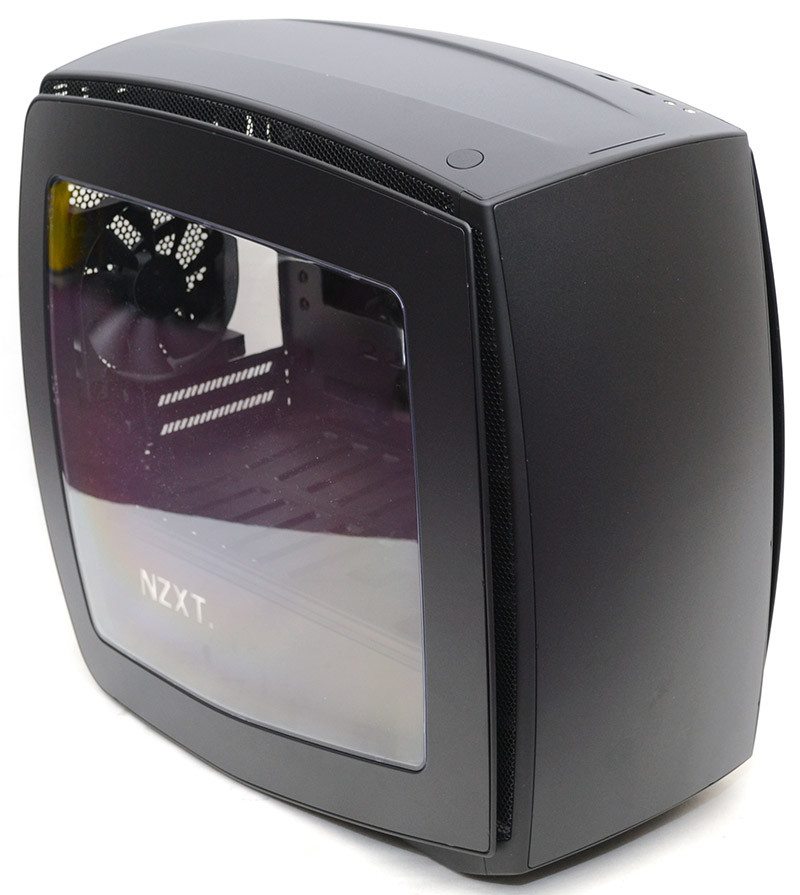
Around the back of the Manta, you’ll find a fan mount for a 140mm fan mount, which comes with elongated screw holes to allow you to adjust the height; this is particularly useful for AIO water coolers as it can greatly increase compatibility. There’s also an integrated light for the rear I/O on the motherboard, which is a big improvement on the old LED system we’ve seen on previous NZXT chassis, mostly because it’s going to be a lot brighter thanks to multiple lights and it’s directly over the motherboard I/O. There are a few thumb screws for the side panels, pretty straight forward stuff there, and if you look further down, an opening at the bottom to allow better airflow to the underside PSU air intake.
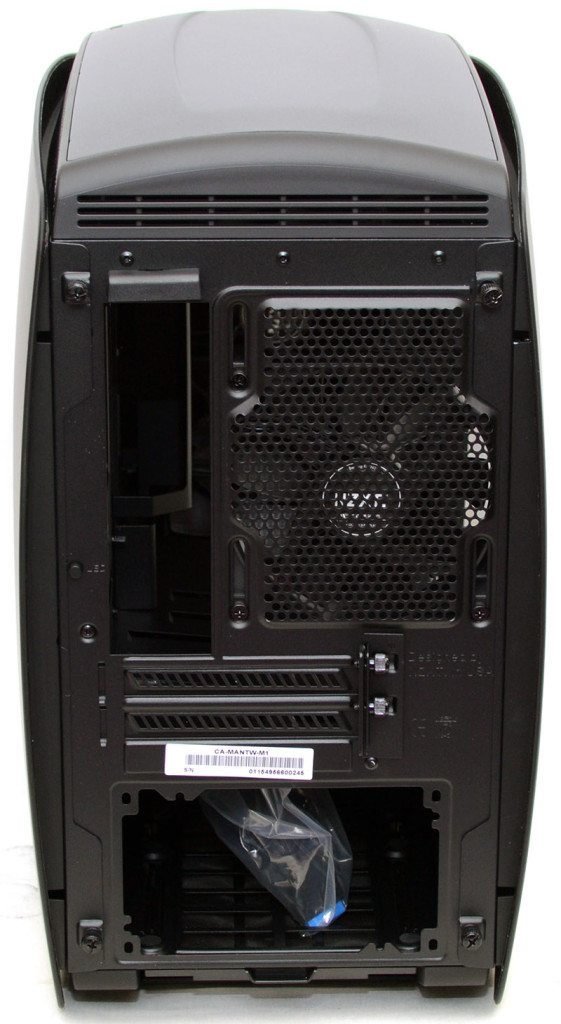
There’s a good size dust filter for the PSU, which can be removed from the back for quick and easy maintenance.
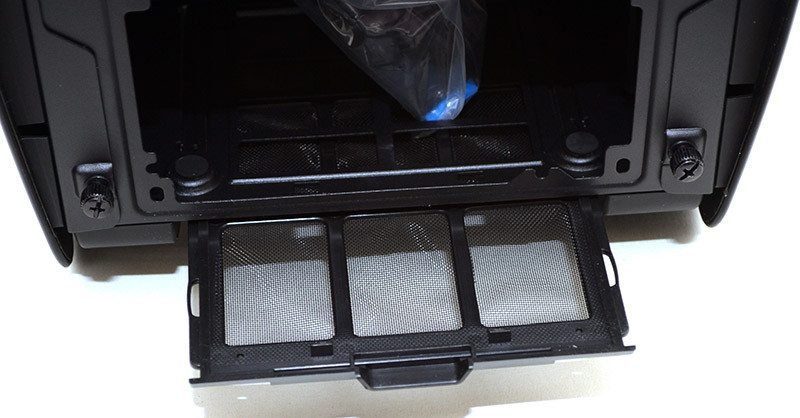
The top of the chassis has a slight indentation, helping further emphasize those curves and lines.
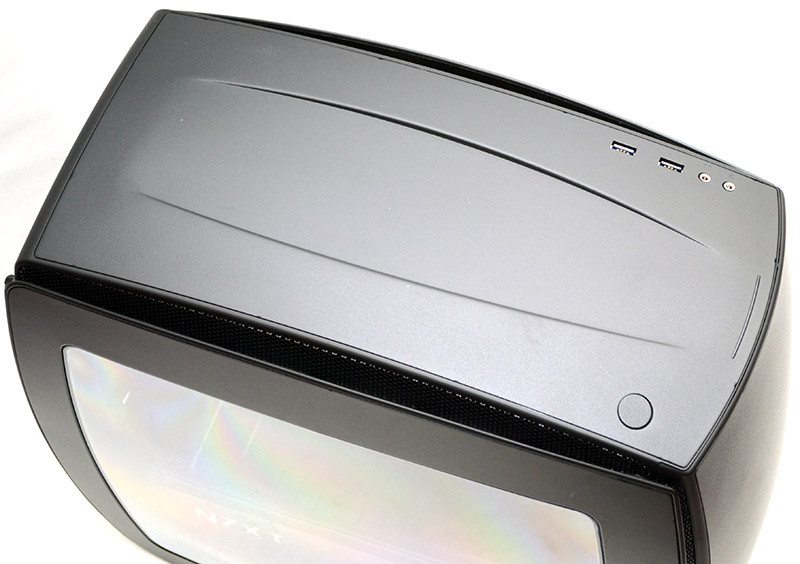
Aside from that, you’ll find a fairly straight forward I/O with a pair of USB 3.0 and HD audio jacks.

The power indicator is towards the front edge and a master power button on the left side; pretty much everything you need.
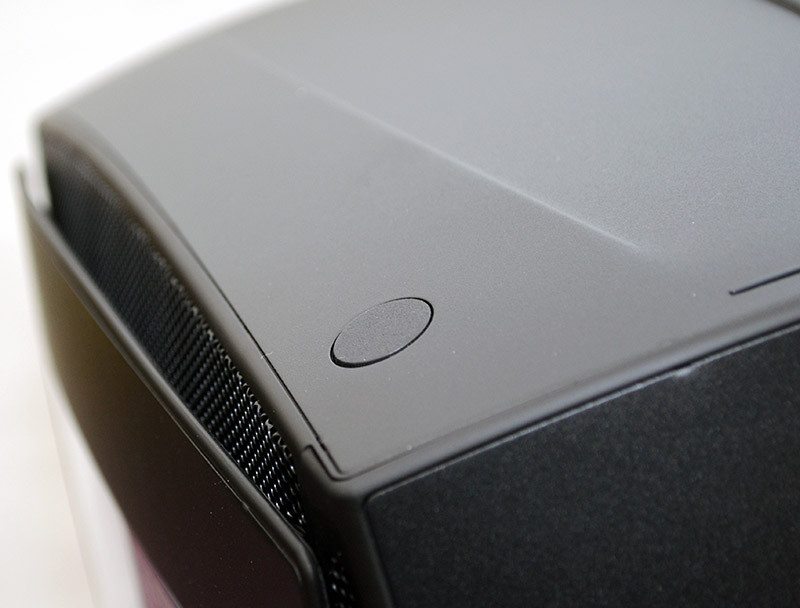
On the base of the chassis, you can see how that airflow channel is going to help bring cool air through to the PSU and front panels while the dust filter will help ensure your system stays as cool and clean as possible. Those feet are super strong, wide and have anti-slip/anti-vibration rubber strips, so the chassis is going to be nice and stable.
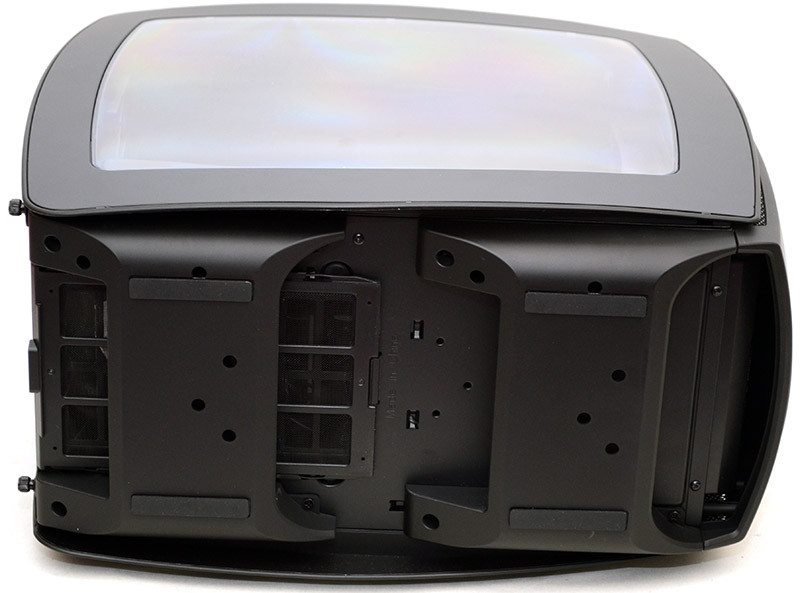
Here’s a closer look at the PSU dust filter, easily removed, washed and reinstalled.
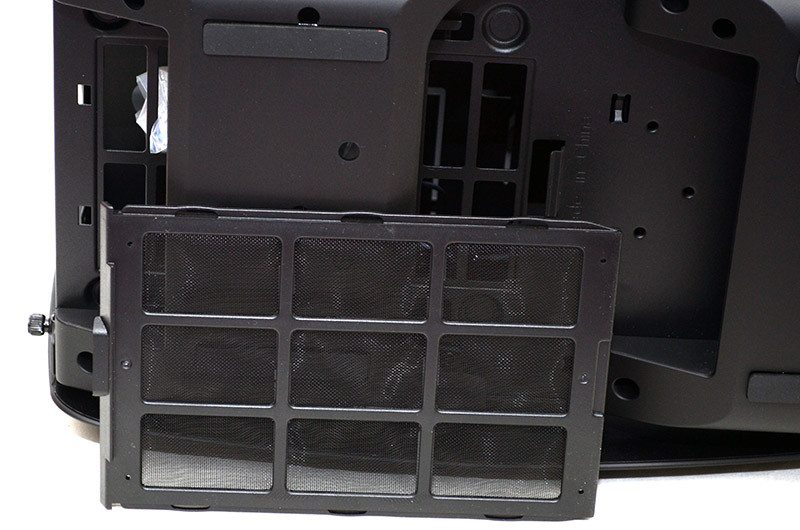
Interior
First up, let’s get that front panel pulled off and take a look behind it. As you can see, we’ve got a large washable dust filter, behind which you’ll find a pair of high-quality 140mm fans, giving us a powerful wall of cool air that draws in from all around the front panel, which should provide exceptional cooling performance for your hardware.
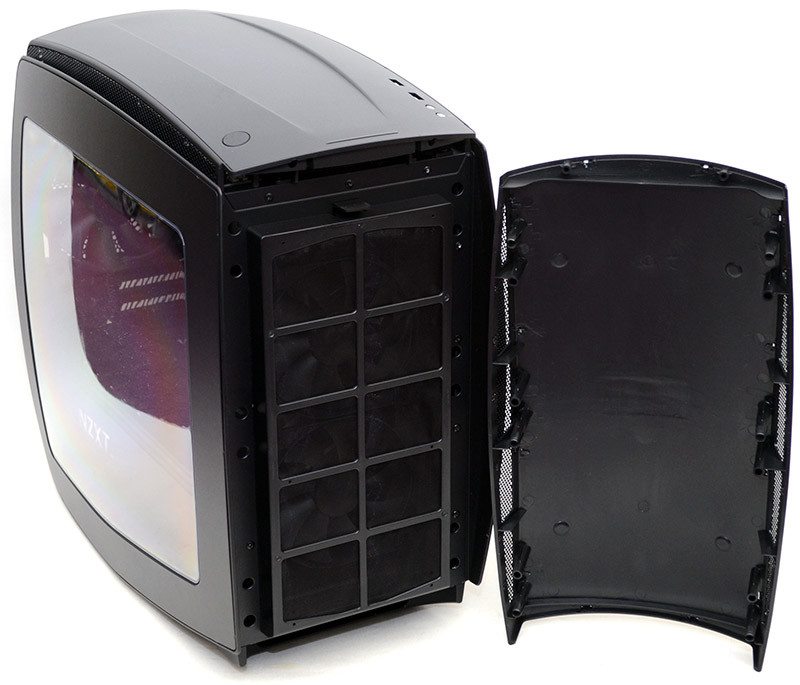
If you want even more cooling performance, you could you can easily install an (up to) 280mm radiator in the front, and if you’re eager for a push-pull fan configuration, the deep design of the dust filter should allow for fans on the outer side of the front panel easily enough.
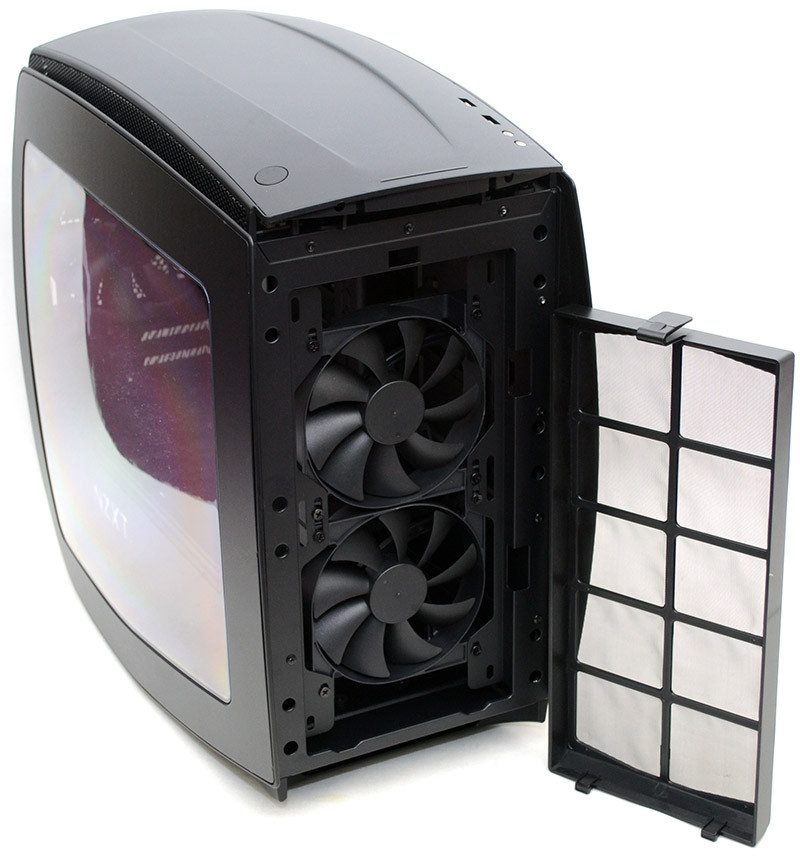
The same goes for the top panel, with room for two 120mm or 140mm fans, with room for a slim radiator which can be mounted on top of the frame, leaving you with much more free space and a clean look on the interior of the chassis. Of course, the option to mount fans on the outside of the front and top panels is due to that oversized design, but if it means a clean looking interior build and fantastic cooling performance, it seems like a pretty good tradeoff to me.
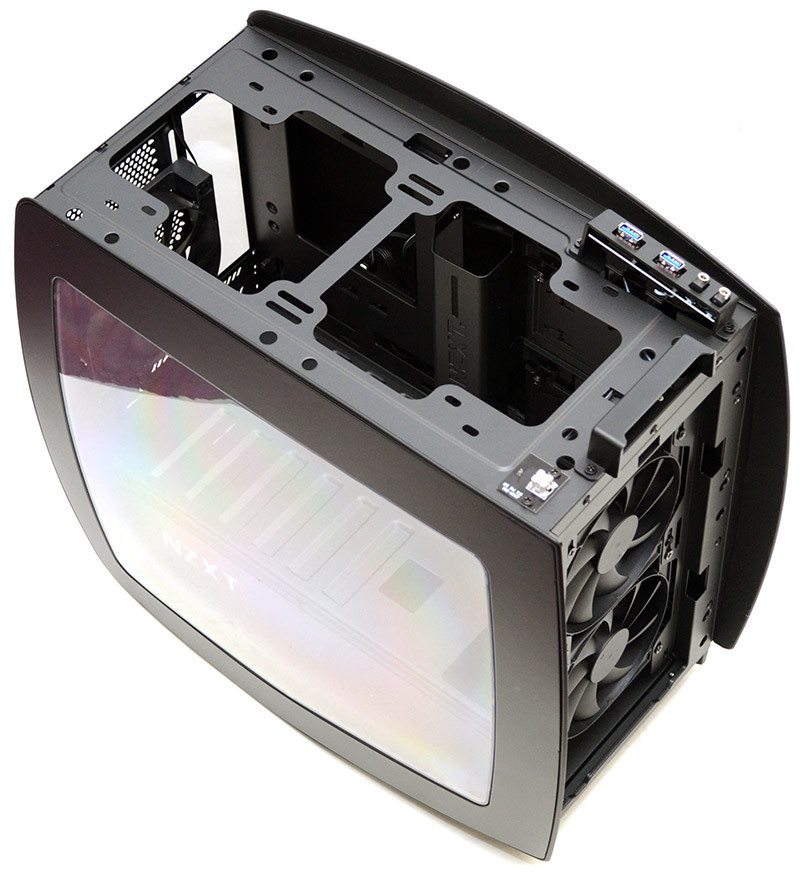
With the left side panel removed, you’ll notice the panel is really well reinforced, and there’s no flex or rattles to be found here, which is always nice.
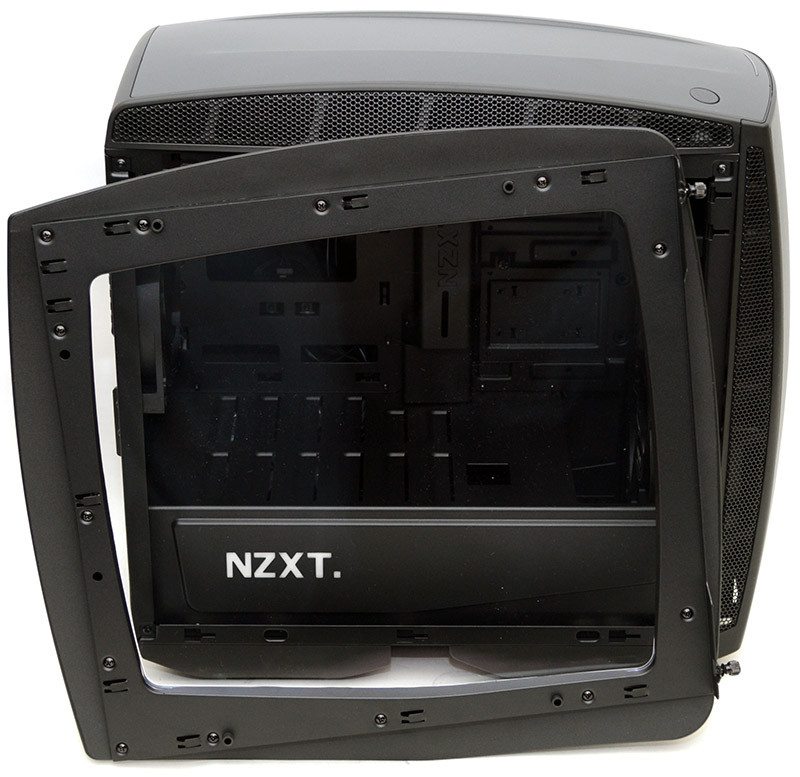
Now we finally get a more detailed look at that stunning interior. There’s a good size CPU cooler mounting cut-out on the backplate, and the four motherboard standoffs are pre-installed; both of which should help speed up the installation process. As you can see, there really is a vast amount of room in this chassis, it’s easily the biggest mini-ITX chassis we’ve ever seen here at eTeknix, but that space certainly isn’t wasted. There are some side-mounted 2.5″ drive bays here, which are going to give you a great way to show off your SSD drives. The two fans barely take up any room, but you can certainly see the potential for a thick radiator here also; helped in no small part by the cutaway in the PSU shroud towards the front of the case.
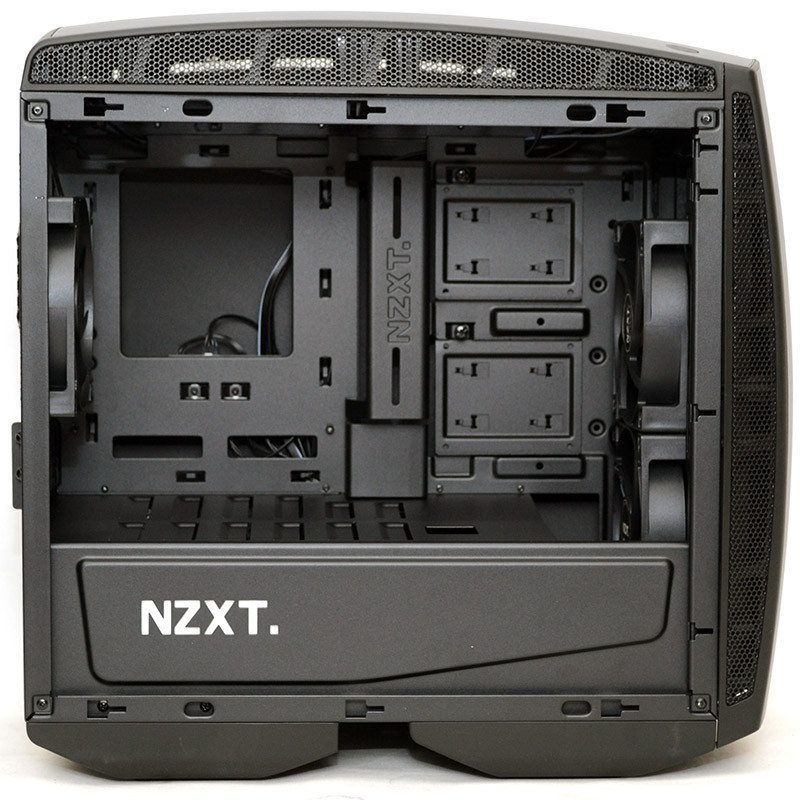
Cable management is helped by a raised metal section with the NZXT logo, which is similar to the design used in the S340, but thanks to a few long screw holes cut into it, it may also serve for mounting a reservoir for those of you who want to add a custom water cooling loop to your build.
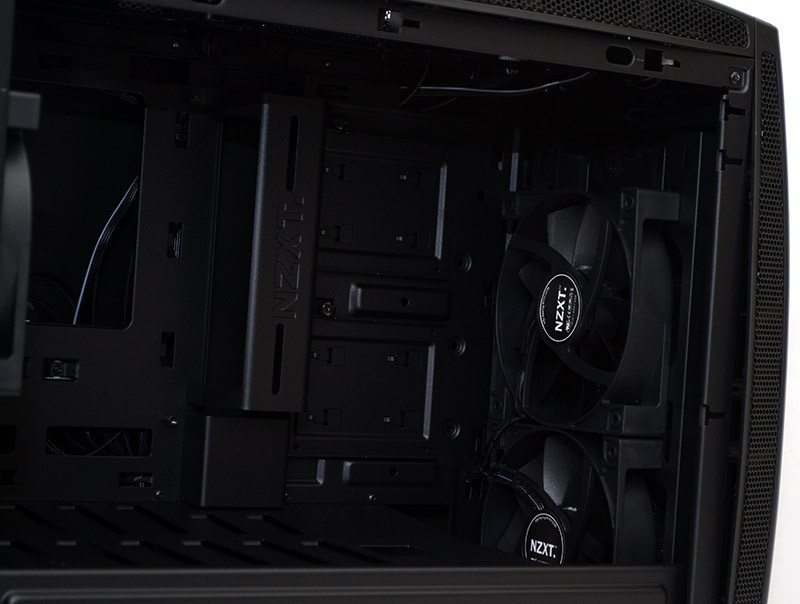
There’s a nice raised section to the side of the PSU shroud, matching the way the side panels rise up at the bottom front edge and just carrying those lines throughout the rest of the design. The NZXT logo cut into the side is LED backlit too, giving a nice little touch of style to the build; not that it doesn’t have a lot of style already.
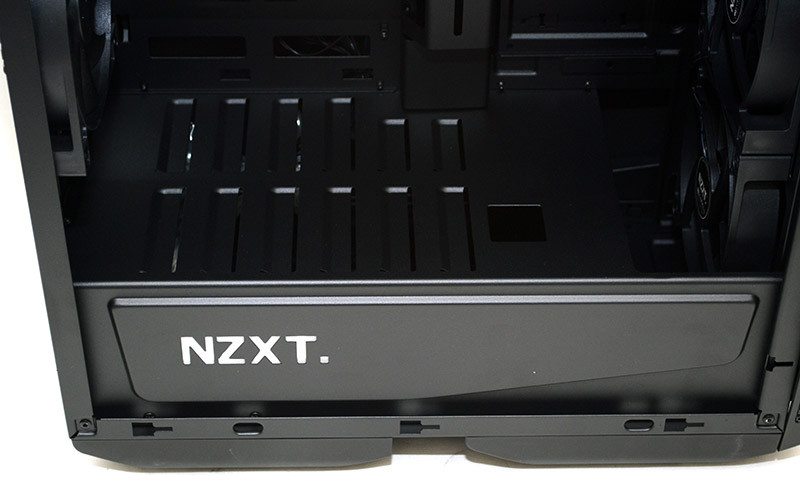
In the back, another high-quality fan is mounted as the exhaust, bringing the fan count up to three, which certainly adds some extra value for money.
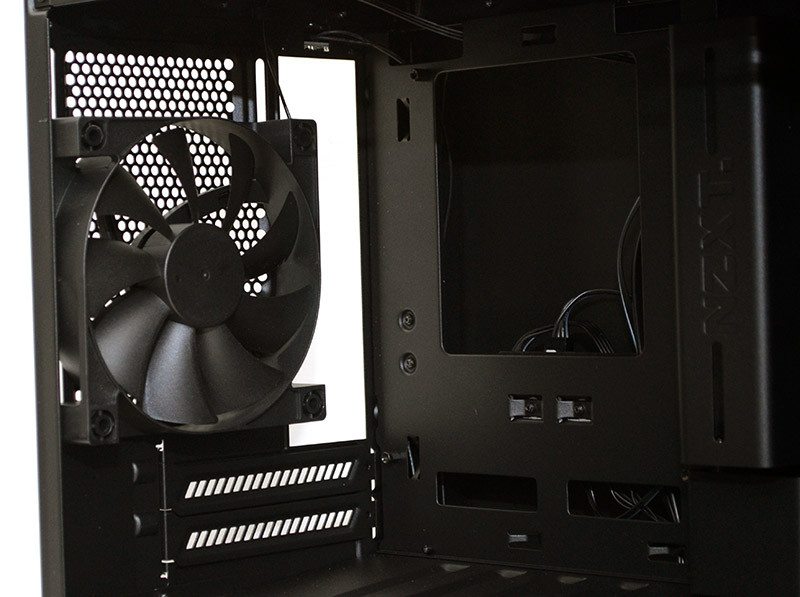
Below that, you can see we’ve got dual expansion slots, so most major GPUs should fit easily enough and without a doubt, the length of the GPU isn’t going to be an issue in this chassis!
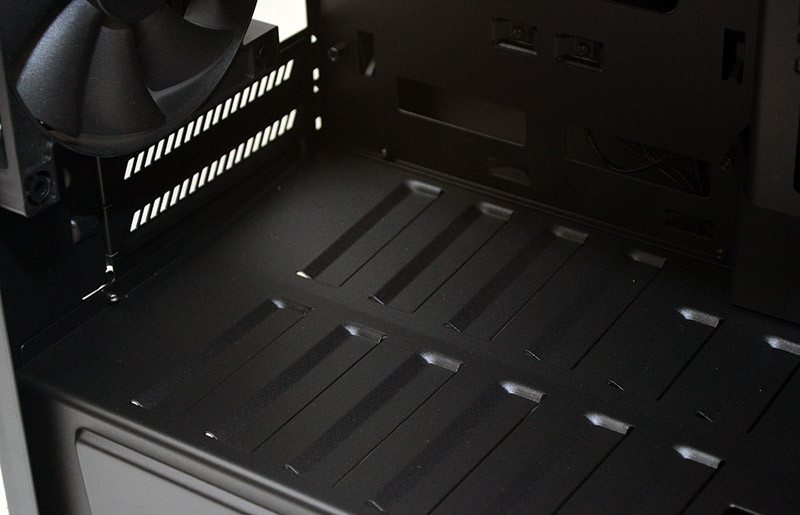
There’s a huge recess on the right side panel, as well as a thick border that adds exceptional durability.
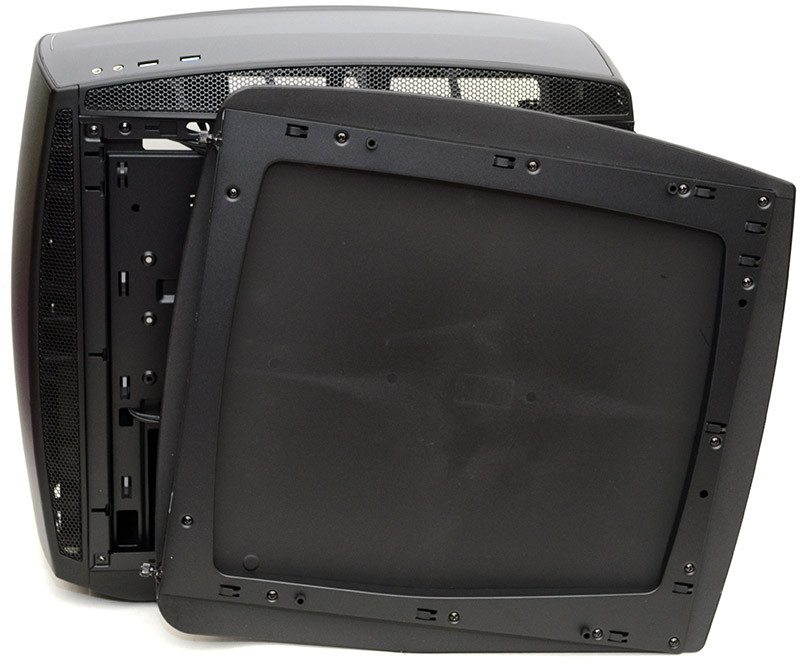
There’s a huge amount of space behind the motherboard, so even if you’re particularly lazy with your cable routing, you’re unlikely to run into any issues here. To help keep things a little more tidy, you’ll also find cable tie loops around all major areas.
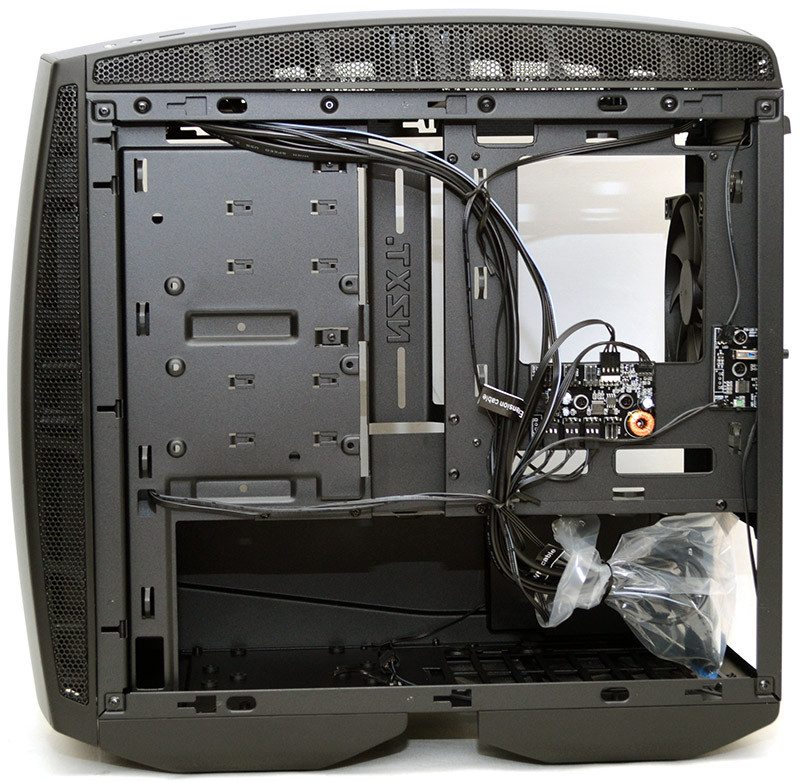
There’s room to screw in a pair of 3.5″ drives behind the motherboard too, although you do need to remove the 2.5″ bays at the other side to do so. This is annoying, but so long as you install the bigger drives first, it’s not going to be a major issue.
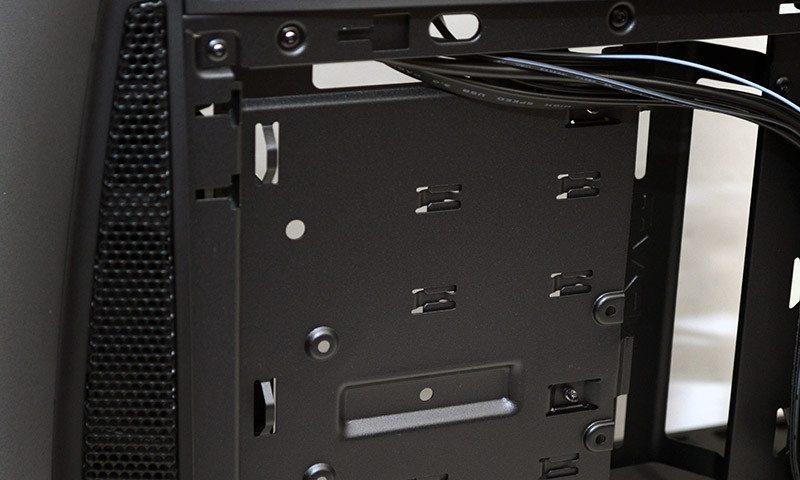
There are three fans pre-installed, with room for two more in the top. Having the possibility of a push-pull configuration on any radiators you have and more, fan connectors could be an issue for virtually all mini-ITX motherboards. Thankfully, NZXT has taken notice of this and added an integrated PWM fan hub, so your fan obsession can be pushed as far as you need it.
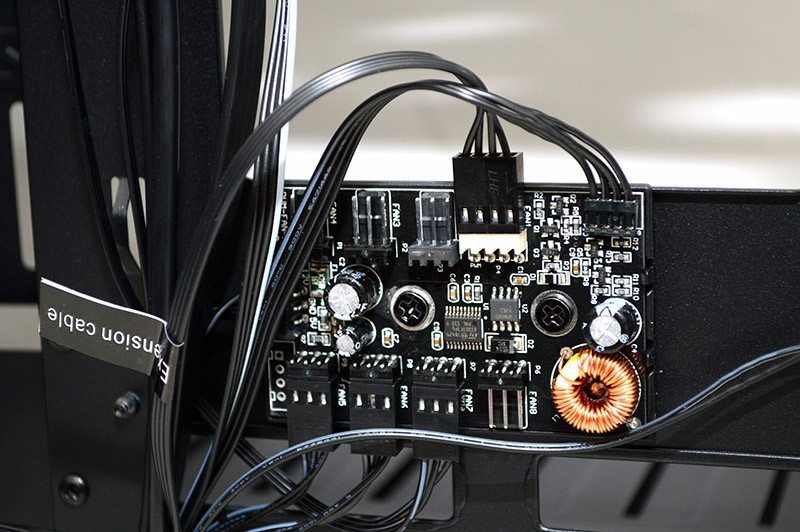
Here you can see a smaller PCB which powers the rear panel lighting, as well as the light switch sticking out to the right there.
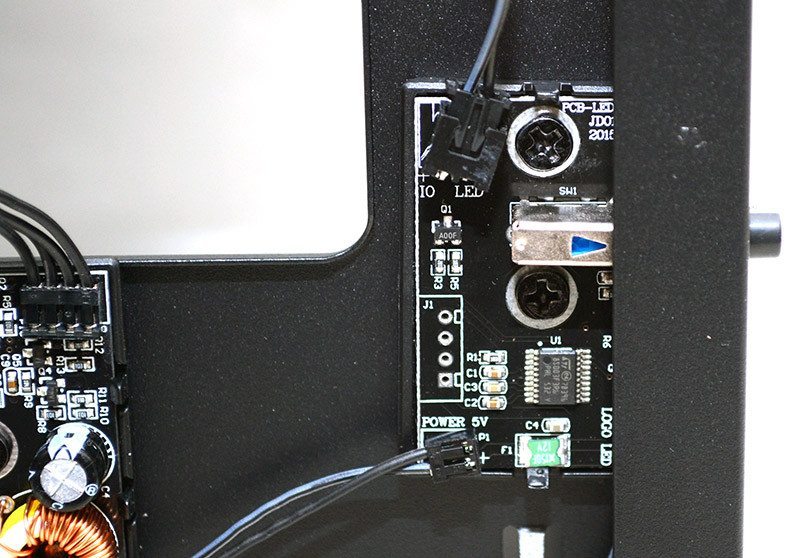
The PSU mounting area is vast, with the length of the PSU being limited to almost the full length of the chassis. This is going to prove extremely handy for cable management, as you can stuff any excess down here and out of the way. It should also leave the modding crowd with room for a good size water cooling pump too.
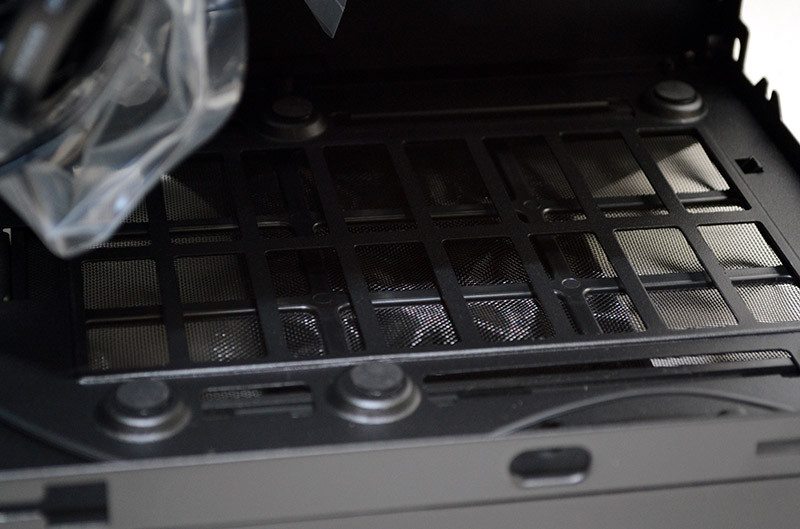
The only thing to consider is the 3.5″ drive mount towards the front here, if you’re using it, it could limit some other hardware (such as pumps), but with four other drive bays in here, I can’t see many people needing it anyway.
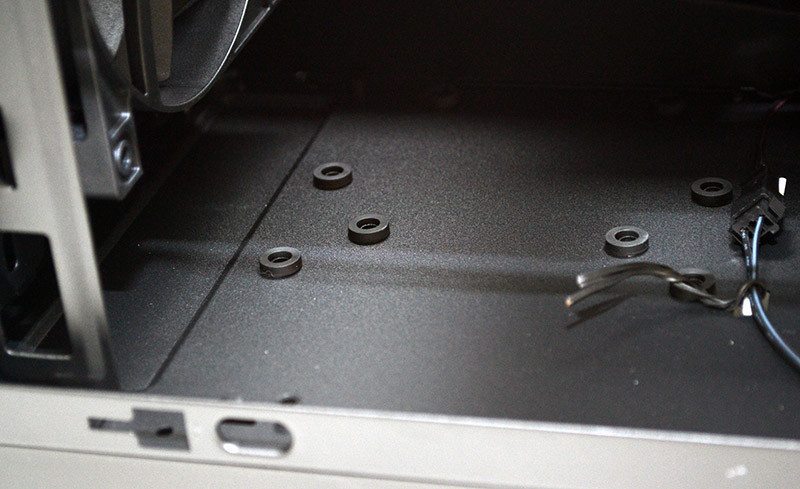
Complete System
Getting our system installed couldn’t have been much easier. This is a mini-ITX system build in a rather large mini-ITX chassis after all, so compatibility wasn’t an issue with anything we put in here. The Sapphire R9 270X Tri-X Toxic is a big card, but it fit with ease and with a bit of room to spare, leaving enough room for a slim radiator if you wanted one.
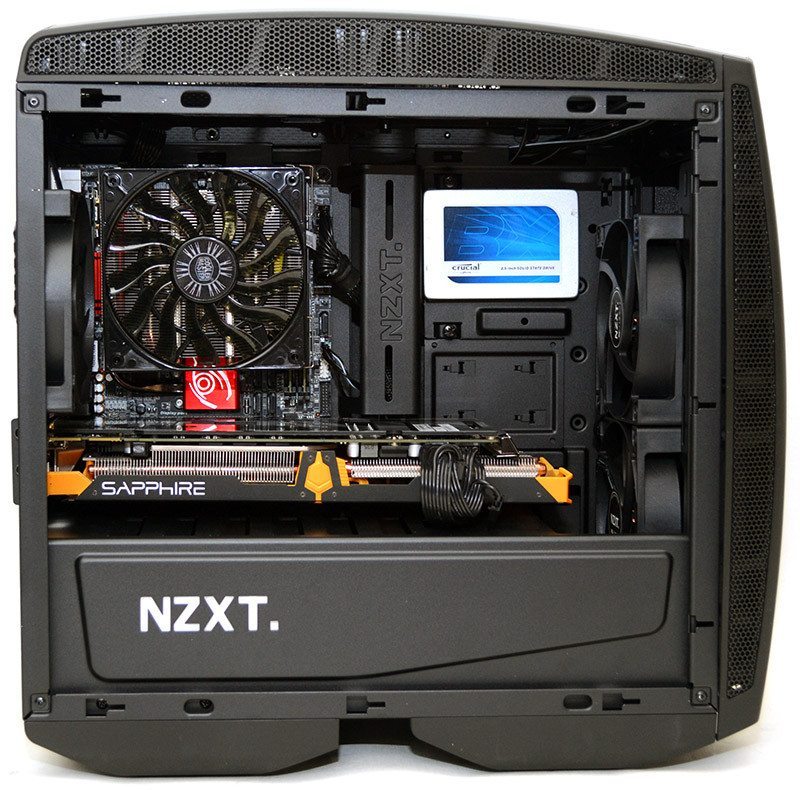
In the back, we’ve got lots of room for an AIO or custom loop radiator and there’s a vast amount of space here for a tall air cooler for the CPU.
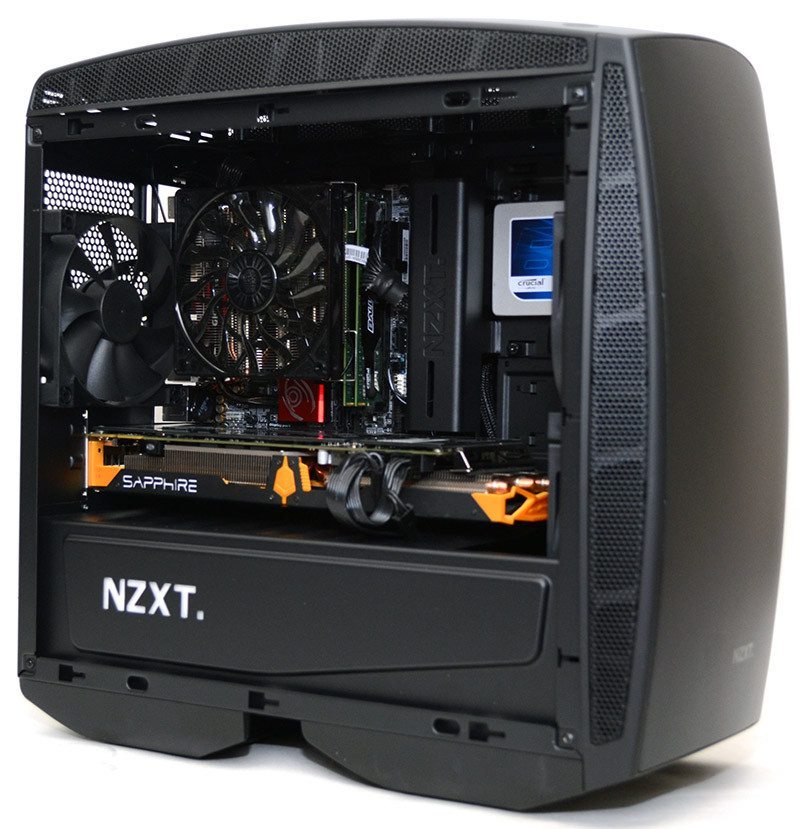
Want to show off your new SSD’s? Those side mounted drive bays are perfect for adding some extra flair to the build.
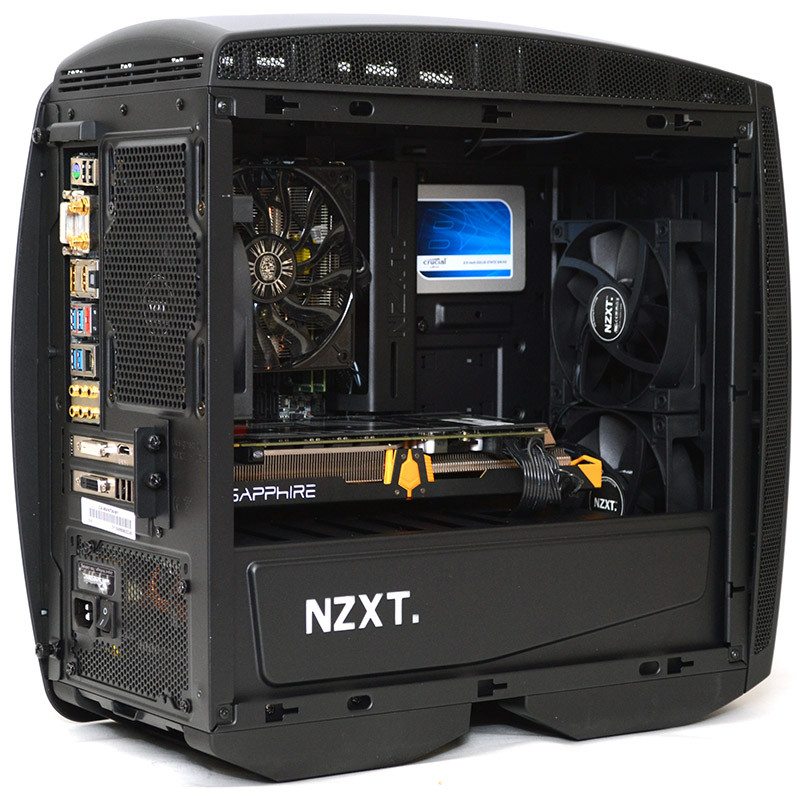
You may have noticed one more thing about this build; there’s very little excess cable on show. The cable management system is simply amazing, with lots of space for excess, cable tie loops where you need them and cut-outs for routing cables in all the right places.
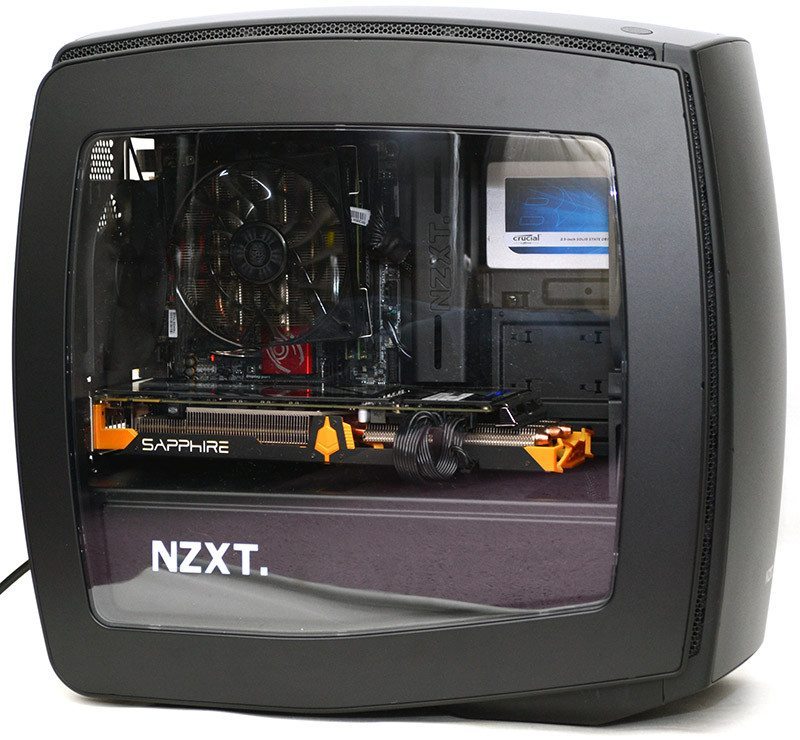
The side panel gives us a great view of the interior, showing off the PSU shroud, the graphics card and any other hardware you have installed; this chassis should look great with LED lighting installed.
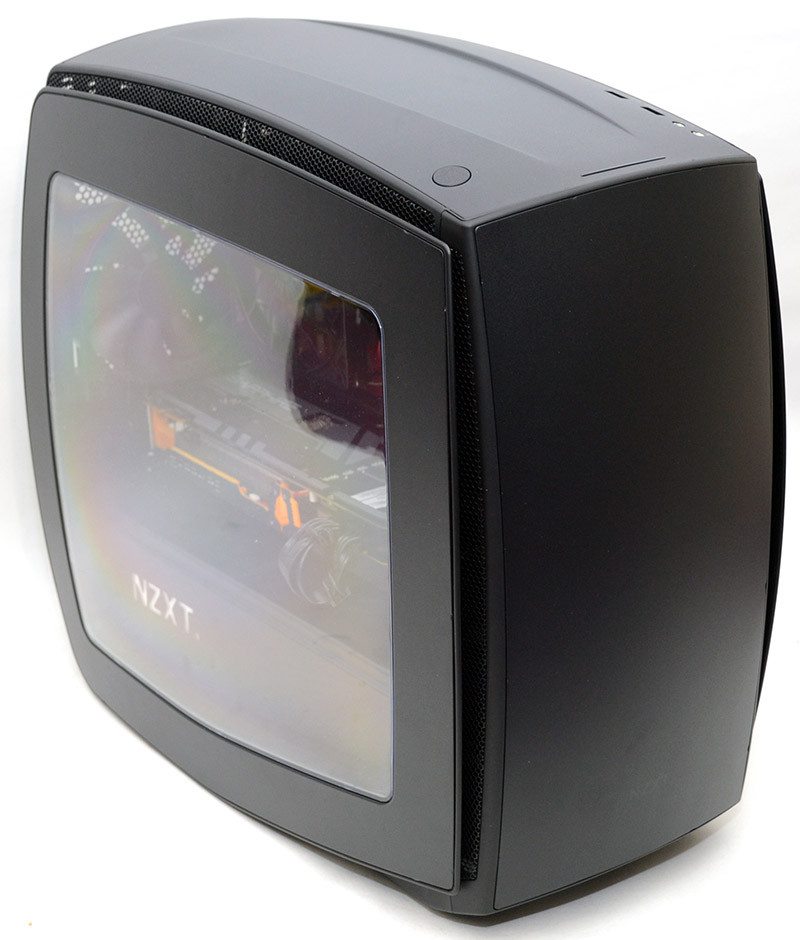
With the lights dimmed and the system powered up, you can see that lovely NZXT logo lit up on the PSU shroud, adding an extra hint of coolness to the overall aesthetics.
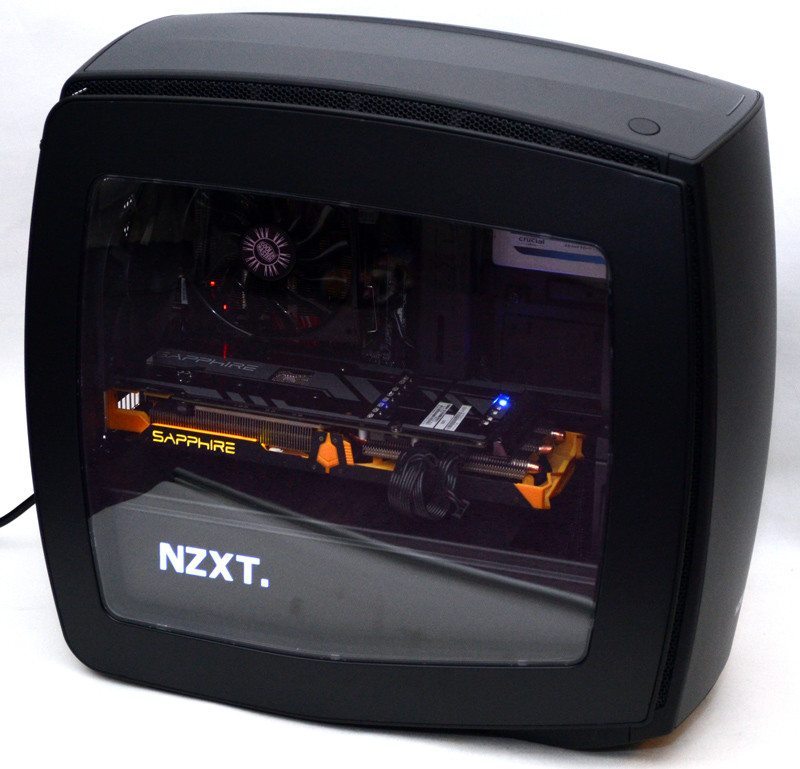
Final Thoughts
Pricing
The NZXT Manta mini-ITX chassis is available for pre-order from most major retailers and will be shipping in mid-February. Of course, if that date changes, or when the actual launch date rolls around we’ll be sure to update you. Expect prices in the region of £99.99 +VAT / €139.99 +VAT.
Overview
NZXT have gone all out on this chassis, breaking away from their main lines of chassis products to make something really unique and I’m happy to say that their hard work has really paid off. While I must admit that this design isn’t going to be to everyone’s liking, style is such a subjective thing anyway, I absolutely love it, and would happily have one sat on my desk and proudly on display.
There’s a lot of potential to this chassis, it may be one of the biggest mini-ITX chassis we’ve ever seen, but that just means there’s a lot more room to have fun with high-end hardware. Mini-ITX motherboards offer a lot of great performance these days, with support for high-end CPUs, impressive overclocking performance and more, so the Manta is hardly limited in terms of performance. With room for a 280mm radiator in the front, another in the top and an additional 140mm in the back, there’s a huge amount of potential here for custom loop cooling. Even air cooling is exceptional here, with three great quality 140mm fan pre-installed, dust filters on all major intakes, a PWM fan hub, excellent ventilation throughout the chassis and more.
Build quality is rock solid, from the heavy duty side panels to the quick release fittings of the 2.5″ drive bays and the PSU shroud. Everything is flawlessly finished and designed, meaning your components are easily installed and the only thing you have to worry about is tucking a few excess cables into the more than ample cable routing spaces.
The price is a little high for a mini-ITX chassis, but it’s clear that NZXT have gone the extra mile and added a lot of features to this chassis that help justify your investment. For a somewhat compact gaming build, the Manta has all the features you could want and more. And who knows, perhaps if this chassis proves popular, NZXT may even revisit the design with a Micro-ATX model and more, but only time will tell.
- Pros
- Excellent build quality
- High-end water cooling support
- Dust filters
- Side panel window
- PSU shroud
- LED lighting
- Room for extra-long GPU
- Supports full ATX PSU
- Exceptional cable management
- Unique design
- Built-in PWM fan hub
- Three 140mm fans pre-installed
Cons
- 3.5″ drive mounts can be tricky, but hardly a deal breaker
- Limited to mini-ITX, which may put off some, but that’s a subjective matter
Neutral
- More expensive that larger H440 chassis, but it’s obviously a little more special and it doesn’t feel overpriced
“The NZXT Mantra is a breath of fresh air, offering up a unique design and huge potential for a high-end gaming build. NZXT really mixed things up with this chassis and it’s certainly to be a big hit with system builders around the world. It may be the biggest mini-ITX chassis we’ve seen, but perhaps bigger really is better!”

Thank you NZXT for providing us with this sample.
